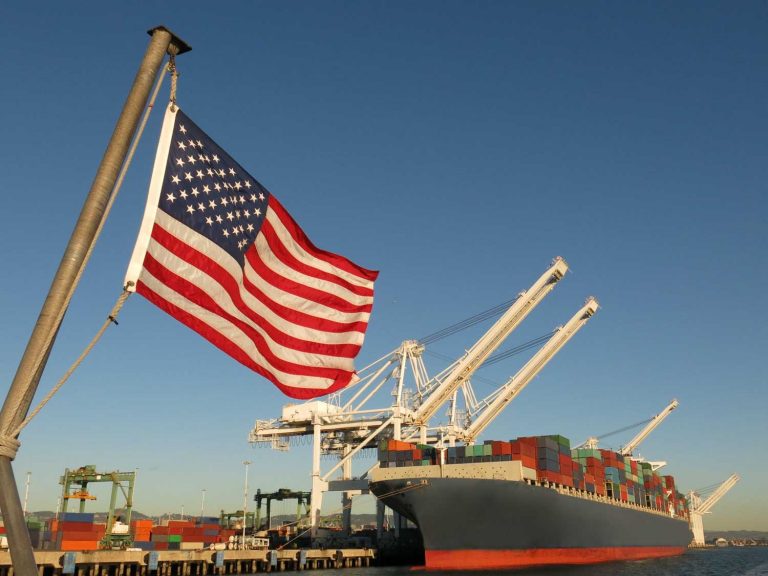
Date:
US importers face multiple challenges
The rapid escalation of transpacific ocean freight spot rates is reminiscent of the spike experienced during the COVID-19 pandemic, while the air freight surge from Asia to the United States, that began late last year, looks likely to continue through the traditionally quiet summer months and into a potentially robust peak season.
Container shipping lines are being accused by the trade press in the US of slashing back or eliminating contracted volume allocations, in favour of carrying higher-yielding cargo at spot rates that have increased by more than 50% in Q2.
It is likely that contracted fixed-rate bookings will diminish even further as spot rates from Asia to the US continue to increase.
Carriers implemented a general rate increase (GRI) on the 15th May, which will double average spot rates (MoM) from Asia to the US West Coast, if successful. And with space on vessels leaving Asia in May extremely tight, and carriers rolling containers onto subsequent voyages, they are likely to be successful.
In anticipation of their success, carriers have already filed a further GRI for the 1st June, mimicking the rapid escalation of pricing that was triggered by the 2021–22 COVID-19 pandemic.
US imports from Asia have already surged over 19% YoY in 2024 and retailers are forecasting continued import growth into the traditional fall peak shipping season.
West Coast congestion
Imports from Asia into Los Angeles-Long Beach increased by almost 1/3 in Q1 2024 to 1.96 million TEUs, creating container backlogs at marine terminals, a sharp increase in eastbound intermodal train movements and a chronic shortage of returning railcars, which exacerbates delays.
Most backlogs have cleared and terminal operators insist they have successfully supported first quarter volumes, but their challenge is not over with imports forecast to increase 5.5% in May, 8.9% in June, 6.6% in July and 6.9% in August.
Baltimore Bridge Accident
The collapse of the Francis Scott Key Bridge in Baltimore created some disruption, but activity pretty swiftly shifted to nearby ports, so its impact has been limited.
A criminal investigation by the FBI will determine if the crew left port knowing that the ship had serious system problems, while the ship’s owners eventually declared general average, which means that shippers with goods on board become financially jointly and severally liable for the incident, which could be very expensive without appropriate marine cover.
The Port of Baltimore expects to restore normal capacity by the end of May.
Threat of East Coast strikes growing
The International Longshoremen’s Association’s labour contract on the East Coast expires on the 31st September, with the 17th May the cut-off date set by the union for local contracts to be agreed, so an overall master contract can then be negotiated.
No deal has been agreed and the threat of strikes loom closer.
Air freight surge continues
Relentless eCommerce demand from China to the US, which has continued for over six months, shows no signs of letting up as we move into traditionally slower months.
The intense air cargo demand that began late last year is set to extend through the summer and into a robust peak season. Largely driven by modal shift, due to the Red Sea crisis and a huge increase in consumer volumes from eCommerce marketplaces like Shein and Temu, who send over 600,000 packages to the US every day.
Demand for air cargo space out of China to ship eCommerce is absorbing more than half the available outbound capacity, particularly in the southern regions and is so intense that rates on alternative sea/air routes to the US via Taiwan, Japan and Korea are exceeding those from mainland China.
In the UK shipments up to £135 are exempt from duties, although they are always subject to VAT regardless of value.
The US’ de minimis threshold is $800 and it is estimated that 2.5 million de minimis shipments currently arrive at US Customs and Border Protection (CBP) facilities every day.
In 2023, CBP processed more than 1 billion de minimis shipments; in January 2024, CBP had already processed half a billion.
There are calls to close the ‘de minimis loophole, but while it lasts, sustained demand is likely to keep transpacific air freight rates well above prior-year and pre-pandemic levels.
We negotiate long-term and protected contracts with airlines and shipping lines across the alliances to secure space and rates, so that we can provide the best alternatives and options, whatever the situation.
To learn how we can support transpacific and transatlantic trade, or to learn more about our ocean and air solutions, please EMAIL our Chief Commercial Officer, Andy Smith.
